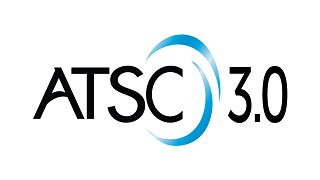ATSC 3.0 Overview for PBS ETAC

ATSC 3.0 Overview for PBS ETAC
by Mike Snyder, Studio Engineering Manager, NMPBS and ETAC Member
Editor’s note: Mike Snyder of New Mexico PBS recently created an overview primer for his state broadcaster’s association on the topic of ATSC 3.0. With the ongoing questions and discussions happening around this standard, he felt sharing it would generate ideas and questions at your station to help jumpstart the planning process. Mike also invites you to reach out to your ETAC representative to continue the discussion from here.
EXPLORING THE ATSC 3.0 STANDARD
- ATSC 3.0 is a major upgrade and expansion of our existing over-the-air broadcast platform. Unlike the move to digital TV, adoption of ATSC 3.0 is voluntary. It is not backwards compatible with our existing ATSC-1 standard.
- The technology behind Next Gen TV will better reach viewers through a more robust signal and by delivering program streams to hard-to-reach areas such as indoor over-the-air televisions and mobile receivers in smartphones, tablets and other devices.
- The underlying data in the ATSC 3.0 standard uses IP. This aligns the new transmission system with the current over-the-top (OTT) and broadband web-delivered world, which opens the possibility of hybrid broadband delivery (to supplement the broadcaster’s bandwidth) of enhanced guides, broadcaster applications, deep linking to enhanced content and in-program purchasing.
- A broadcast gateway, located on the studio side of the transmission system, produces the appropriate IP transport stream for sending to the transmitter, multi-channel video programming distributor (MVPD) operators and to optional SFN transmitters.
TRANSITIONING WITH LIMITED SPECTRUM
- Addressing the Spectrum Conundrum: Given that no new spectrum is available for the transition, any plan must meet the challenge of managing the industry’s overall spectrum capacity. The specific number of channels available in a given market, and the physical propagation characteristics of those channels, are major considerations.
- Physical Considerations: All practical transition models for ATSC 3.0 must consider the RF spectrum allocated to broadcasting. Since TV spectrum extends from low-band very-high frequency (VHF) to ultra-high frequency (UHF), which involves more than a ten-fold difference in frequency between the high and low channels, the characteristics of the specific TV channel assigned to your station and its usefulness for different services is relevant.
- Robustness vs. Coverage Area: The ATSC 3.0 standard is highly flexible, with combinations of modulation and coding trading off robustness for data rate. Highly robust signals traveling long distances can be configured at lower data rates suitable for low definition programs or small mobile screens. Less robust signals with high data rates for services such as UHD TV are also possible with lesser coverage. For service planning and coverage and interference analysis, different robustness/data rate trade-offs will yield different results
MARKET BUILDOUT
- How to Build Out ATSC 3.0: Once a decision to convert to ATSC 3.0 has been made, careful consideration must be given to the entire transmission path, starting at the antenna, and working back to the program stream generation point.
- The Broadcast Gateway is a new concept with ATSC 3.0. It combines live and non-real-time content, advanced emergency alerting, program guide, program-related data and control data, and then produces an IP stream called the STL transport stream (STLTP), which can be deployed by a Society of Motion Picture and Television Engineers (SMPTE) 2022-1 compliant microwave and/or fiber equipment.
- Existing ATSC-1 STL systems are not compatible with ATSC 3.0. While planning the STL upgrade, remember that you still need to keep an ATSC-1 STL operational, and depending on how your market addresses the transition, you may need to provide STL links to your channel-sharing partner(s).
- Direct feeds to MVPD providers should also be considered, keeping in mind the provision of the correct ratings watermark to all feeds. STL considerations are common to both repacked and non-repacked stations.
RESOURCES & INFORMATION:
NEXT GENERATION TELEVISION (ATSC 3.0) STATION TRANSITION GUIDE from NAB

